#Transit infrastructure
Text
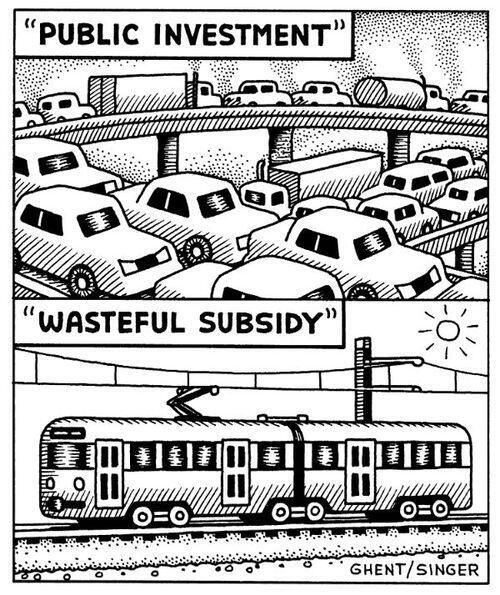
Comic by Andy Singer
17K notes
·
View notes
Text
U.S. Bus Market Will Reach USD 11,237.7 Million By 2030
The U.S. bus market is projected to be USD 11,237.7 million by 2030 growing at a CAGR of 4.7% during the forecast period. This growth can be credited to the fast urbanization and increasing populace, armed with the growing government investments in the advancements of public transport vehicles. Furthermore, the obtainability of federal, state, and local funding and the existence of a huge count of school buses boost industry development.

In recent years, the school buses category had the largest revenue share, approximately 55%, and the category is also projected to remain dominant in the future as well. This development can be credited to the fact that these buses are the largest form of mass transport in the nation.
Almost 480,000 school buses were on the roads in recent years in the U.S., outnumbering transit buses around 7 to 1. Moreover, the rising acceptance of E-buses for school purposes advances the industry in this category in the U.S.
To receive free sample pages of this report@ https://www.psmarketresearch.com/market-analysis/us-bus-market/report-sample
Public transport holds the capability to enhance air quality, traffic safety, accessibility, and active transportation, and also personal well-being advantages. Public transportation utilizes less fuel and releases lower levels of unstable organic composites, carbon dioxide, and carbon monoxide per passenger mile compared to private vehicles. Along with the ecological aids, it has significantly lesser crash rates and lower crash harshness than automotive travel.
The electric propulsion category is estimated to advance at the highest CAGR, of approximately 30%, during the projection period, on the basis of revenue. This is mainly because the usage of electric buses in the nation was approximately 1.6% of the nation’s total bus sales in recent years, and the share of e-buses in public fleets is constantly growing.
Additionally, several public transportation agencies have contracted contractual orders with electric bus builders for obtaining electric buses.
Hence, the fast urbanization and increasing populace, armed with the growing government investments in the advancements of public transport vehicles are the major factors propelling the U.S. bus market.
#U.S. bus market#Public transportation#Urban mobility#Bus fleet electrification#Sustainable transit solutions#Smart bus technologies#Mass transit systems#Transit infrastructure#Transportation trends#Electric buses#Clean energy initiatives#Market players#Mobility as a Service (MaaS)#Bus manufacturing#Infrastructure investment#Future of public transportation#Emissions reduction#Passenger safety#Market growth#Innovative bus designs.
0 notes
Text

Notice how "I do not need a car," "I will use public transport," and "I will just take the bike" are not the same as you have to do this or that everyone can? Yes, tough luck, but also the thing about transit advocates is that they advocate... for transit... They know not everybody has a choice and want you to have that option. I personally am car free and not vegan but it's like the knee-jerk response to veganism where people say "you think you're better than me, don't you!" unprovoked. Insecurity.
#dare i add the 'not everyone has a choice' angle goes both ways and owning a car and driving is not an option for a lot of people#INCLUDING people who live in areas without bike infrastructure or transit
693 notes
·
View notes
Note
Freeways are NOT safer than surface streets, the most deadly accidents happen on freeways due to the high speeds involved. Look up actual statistics and go to drivers ed b4 you bootlick for freeways.
My very first ask! Thanks anon!
So, even though you called me a bootlicker for advocating for public transit, I'm going to address the core of your argument and leave out the ad hominem.
1. Couldn't find any statistics on freeway vs. surface streets percentage. If you've got it, let me know and stop using the smoothbrained alt-right "do your research" line. Only related thing I could find is that 17% of traffic deaths are pedestrians, which (statistically) don't occur on freeways.
2. I suspect you're right that more fatal crashes occur on freeways! However, we have to adjust for how much travel time is spent on freeways vs. surface streets. If they're far more heavily used (spoilers: they are), then even a higher number of deaths still equates to a LOWER number of deaths per capita, meaning they're safer. That's statistics, even if they don't agree with your world view.
3. (And this one is really important) Freeways suck. They suck for a plethora of reasons. There's so much scholarship and research on the suckiness of freeways. Public transit infrastructure is the solution to that problem. I will never advocate for the expansion of freeways (or even their use over surface streets), especially at the expense of a robust public transit system.
Huh, I guess I addressed the bootlicker comment after all, you sly devil.
#amtrak#public transit#freeways#infrastructure#bootlicking#trains#cars#transportation#half of my OCs are trains
166 notes
·
View notes
Text
I hate you cars. I hate you Ford. I hate you GMC. I hate you car centered infrastructure. I hate you highway system. I hate you prioritization of motor vehicles. I hate you jaywalking. I hate you lack of public transportation. I hate you anti public transportation propaganda. I hate you trains you have to drive to. I hate you lack of sidewalks and crosswalks. I hate you giant slabs of concrete. I hate you stroads. I hate you lack of pedestrian safety. I hate you environmental destruction. I FUCKING HATE IT HERE!!!
#anti car#fuck cars#urban planning#stroad#car infrastructure#highway#american highways#america#WHYYY#i hate it here man#public transit#public transportation#public transport system#subway#trains#to be clear: i think people should be able to drive cars if they want#HOWEVER#people should also not be obligated to drive#and city infrastructure should focus on community and prioritize people#not cars#i hate cars
297 notes
·
View notes
Text
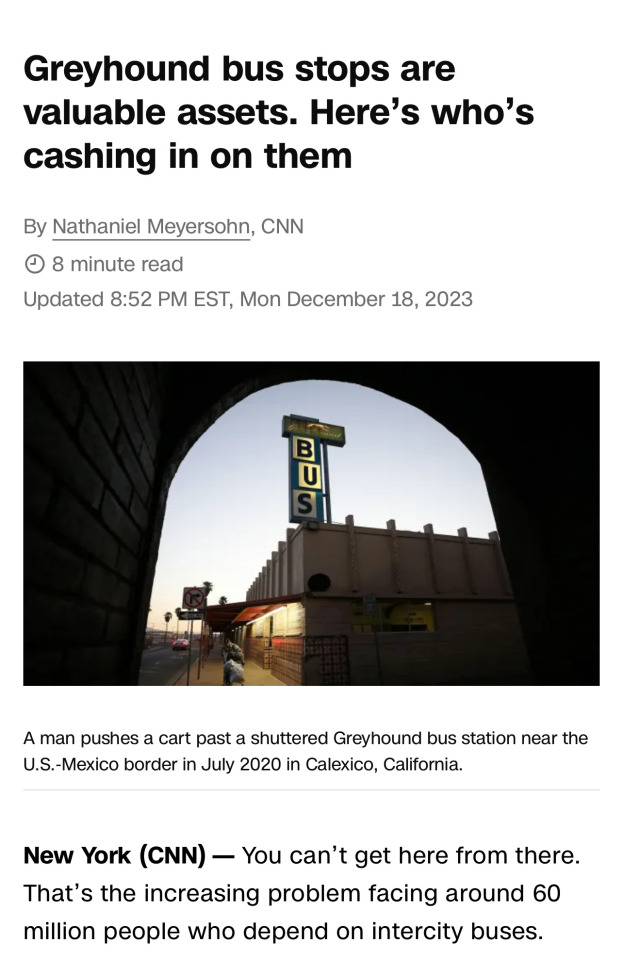
“All this happening at once is really startling,” said Joseph Schwieterman, a DePaul University professor who researches intercity bus travel and directs the university’s Chaddick Institute for Metropolitan Development. “You’re taking mobility away from disproportionately low-income and mobility-challenged citizens who don’t have other options.”
Roughly three-quarters of intercity bus riders have annual incomes of less than $40,000. More than a quarter would not make their trip if bus service was not available, according to surveys by Midwestern governments reviewed by DePaul University.
Intercity bus riders are also disproportionately minorities, people with disabilities, and unemployed travelers.
A spokesperson for Greyhound, which is now owned by German company FlixMobility, said it strives to offer customers the most options for connections, but has “encountered challenges in some instances.” The spokesperson also said they “actively engage with local stakeholders to emphasize the importance of supporting affordable and equitable intercity bus travel.”
The terminal closures have been accelerating as Greyhound, the largest carrier, sells its valuable terminals to investors, including investment firm Alden Global Capital.
Last year, Alden subsidiary Twenty Lake Holdings purchased 33 Greyhound stations for $140 million. Alden is best known for buying up local newspapers like The Chicago Tribune, New York Daily News and The Baltimore Sun, cutting staff, and selling some of the iconic downtown buildings.
Alden has started to sell the Greyhound depots to real estate developers, speeding up the timetable for closures.
“I don’t know the specific details of each building, but it is clear what is happening here: an important piece of transit infrastructure is being sacrificed in the name of higher profits,” said Stijn Van Nieuwerburgh, a professor of real estate at Columbia Business School.

“The public sector has turned a cold shoulder to buses,” DePaul’s Schwieterman said. “We subsidize public transit abundantly, but we don’t see this as an extension of our transit system. Few governments view it as their mandate.”
Bus terminals are costly for companies to operate, maintain and pay property taxes on. Many have deteriorated over the years, becoming blighted properties struggling with homelessness, crime and other issues.
But terminal closures cause a ripple effect of problems.
Travelers can’t use the bathroom, stay out of the harsh weather or get something to eat while they wait. People transferring late at night or early in the morning, sometimes with long layovers, have no place to safely wait or sleep. It’s worse in the cold, rain, snow or extreme heat.
Bus carriers often try to switch to curbside service when a terminal closes, but curbside bus service can clog up city streets with passengers and their luggage, snarl traffic, increase pollution, and frustrate local business owners. In Philadelphia, a Greyhound terminal closure and switch to curbside service after its lease ended turned into a “humanitarian disaster” and “municipal disgrace” with people waiting on street corners.
(continue reading)
#politics#infrastructure#bussing#public transportation#mass transit#mass transportation#capitalism#economic racism#the commons#greyhound#flixmobility#greyhound bus#greyhound bus lines#bus stops
71 notes
·
View notes
Text
stop arguing the existence of forklifts in the atla comics under my post you guys. there was an honest to god truck in Day Of Black Sun
#atla#frankly I think the biggest technology jump engine/ locomotive wise between#atla and tlok would have been the transition from vehicles being owned by private#companies and the state -> individual citizens due to automation and changes to#RC infrastructure rather than the invention of the technology itself but thats another post.#LIKE IM JUST SAYING. the idea that the tech timeline in the avatar universe looks different than ours#because imperialism and the subsequent enterprises it spawned completely monopolized#the motor industry for a while before personal vehicles became popular and affordable could#be fun... play with me in this space... <- guy who is always saying this
63 notes
·
View notes
Text

#urban planning#meme#cars#car dependence#fuck cars#(obligatory 'cars are good for some applications but the entire pop of a city depending on em just to get a bag of groceries is wtfery')#tbh it really fucks me off that the netherlands gets dumped with snow and is cold a lot but the canadian prairies act like it's a no go lol#netherlands#comic#bicycles#cycling#ebikes#induced demand#bakfiets#public transportation#public transit#infrastructure
70 notes
·
View notes
Text
In the bike lane strait up doingg "it"
And by "it" haha, let's justr say, freaking out :)
at the inadequate infrastructure that has been handed to me by my city :))
21 notes
·
View notes
Text
you can call the white cane a mobility aid. it’s purpose is to prevent injury while ambulating (moving around in a space with your body). so it literally fits the definition of being a mobility aid if you want to call it that.
#also it’s not like white canes are respected any more than any other mobility aid#you are still subjected to nonconsensual 20 questions from complete randos half the time you leave your house#amongst other things like a car based infrastructure and lack of public transit makes being blind or physically disabled especially lethal
53 notes
·
View notes
Text
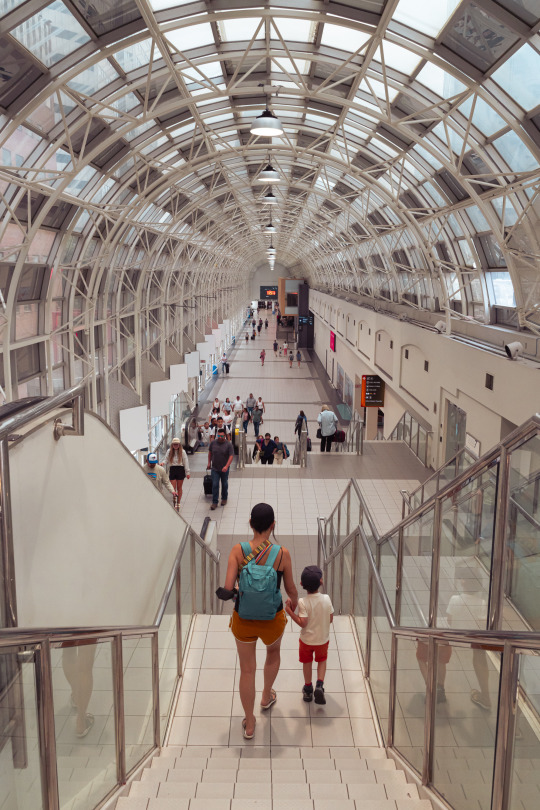
To the trains!
68 notes
·
View notes
Text
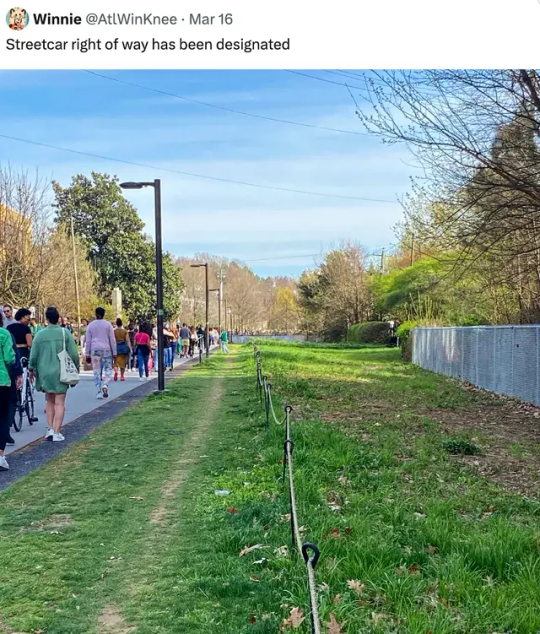

😍 Very cool! I couldn't help but add a train to the photo from AtlWinKnee's tweet (second image).
Put rail on the Atlanta Beltline and turn this into an excellent urban corridor surrounded by infill homes (with affordability), offices, and more.
And *build great ped/bike paths like this everywhere* so that the Beltline isn't such a rare destination for safe walking and cycling.
I want the Beltline path to be instructional for Atlanta, so we learn how much demand there is for great spaces to walk and bike. We should expand this quality of experience (including protected bike lanes) on many streets.
In that situation, the Beltline's use as a visitor destination for recreational strolling/chatting would be reduced some (though certainly not eliminated) due to the 'competition' elsewhere, and the Beltline corridor becomes a bit more of a productive transportation route.
#atlanta#urbanism#atlanta beltline#pedestrian infrastructure#bicycle infrastructure#light rail#transit#transportation#urban planning#transportation planning
18 notes
·
View notes
Text
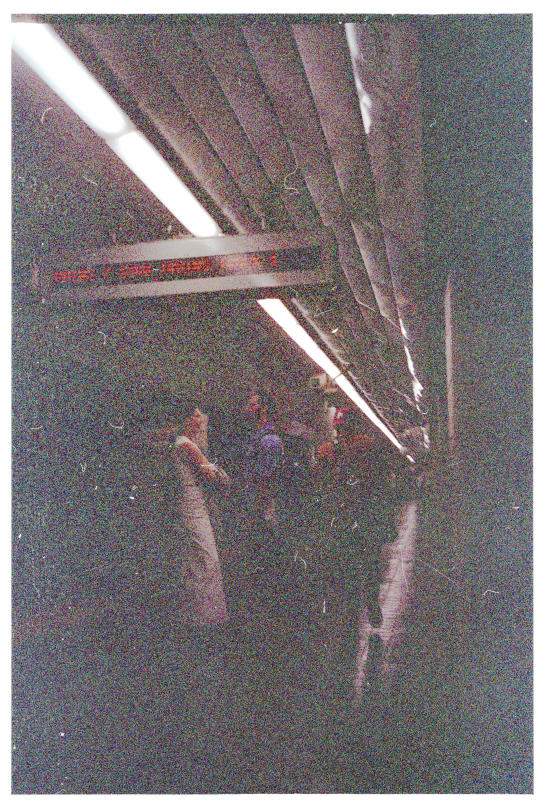
christopher st path station - vivitar ps 1-2-3 & 400 speed color film - developed at eliz digital & scanned with minolta dimage dual iii
#35mm#film grain#people#city photography#city#grunge#film photography#35mm photography#35mm color photography#city life#infrastructure#new york city subways#trains#transit#public transit#public transport#architecture#street photography#street photografie#grainy
19 notes
·
View notes
Text

Maglevsbians.
The frictionless gays of the future.
15 notes
·
View notes
Text
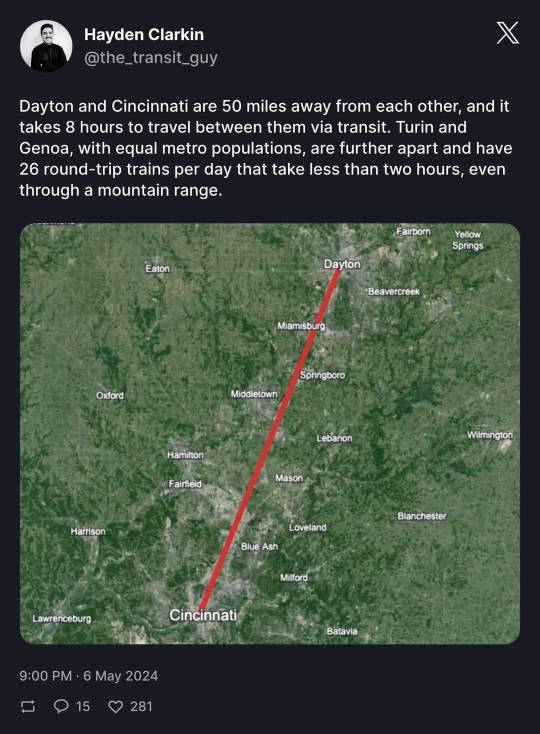
7 notes
·
View notes
Text
just saw a photo from my town in 1931 and we used to have trolleys 😭😭😭
14 notes
·
View notes